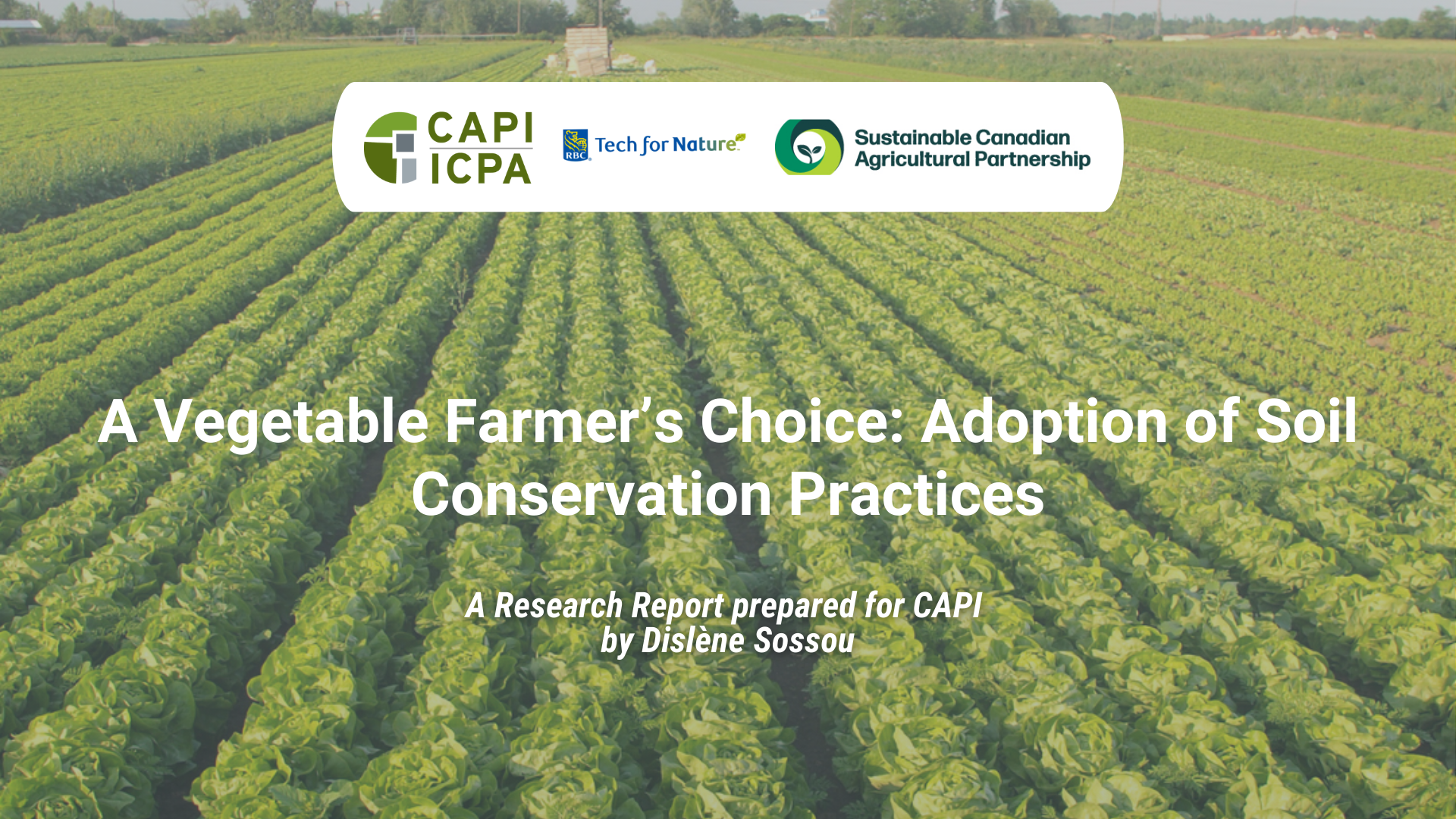A Vegetable Farmer’s Choice: Adoption of Soil Conservation Practices

Note from CAPI
CAPI recognizes the importance of fostering and mentoring the next generation of thought leaders emerging from Doctoral programs across Canada, who are working in multi-disciplinary fields. Through CAPI’s Doctoral Fellowship program, CAPI offers a small, innovative group of young students the opportunity to apply their knowledge and expertise to some of agriculture’s most critical policy issues.
The fourth cohort of CAPI’s Doctoral Fellows (2024-2025) was tasked with focusing their research on policies needed to address pressures on Canada’s land base and natural resources arising from agricultural production in the face of climate change, biodiversity loss, global population growth and food security concerns. This paper is the final deliverable of the program, showcasing the interdisciplinary nature of the fellows’ research as it relates to Canadian vegetable farmers’ decision-making processes in adopting soil conservation practices’ adoption on agricultural lands.
This Fellowship is supported in part by the RBC Foundation through RBC Tech for Nature as part of CAPI’s larger environmental initiative, Policies for Land Use, Agriculture and Nature (PLAN).
CAPI and the Doctoral Fellows would like to acknowledge the contribution of the four members of the Expert Advisory Committee who provided valuable feedback in the preparation of this report – Dr. Marie-Élise Samson, University of Laval, Dr. Tom Nudds, University of Guelph, Peter Sykanda, Ontario Federation of Agriculture, and Dr. Anatoliy Oginskyy, Alberta Ministry of Agriculture & Forestry.
Key Takeaways
- Cover crops and multiple crops work together. Vegetable producers in Canada often pair sustainable practices such as cover crops with multiple cropping, while reduced tillage and multiple cropping act as substitutes.
- Soil fertility drives conservation and crop decisions. Producers often prioritize soil health in the selection of vegetable crops and soil conservation practices.
- Producers choose crops before deciding how much land to plant. In terms of allocating land to vegetable crops, farmers decide which types of vegetable crops to cultivate prior to determining how much land to allocate to each.
- Adoption of soil conservation practices follow different adoption patterns. Farmers’ decisions regarding adoption of soil conservation practices and selection of vegetable crops, are sometimes sequential, while other decisions take place at the same time. Understanding the decision process will allow policymakers to design incentive programs that balance environmental benefits, optimal land use and economic sustainability.
- Economic and environmental goals don’t always align on-farm. There is a potential tension between economic sustainability (via succession planning) and environmental sustainability (via Environmental Farm Plans), suggesting that policymakers or advisors may need to balance both objectives when designing conservation programs
